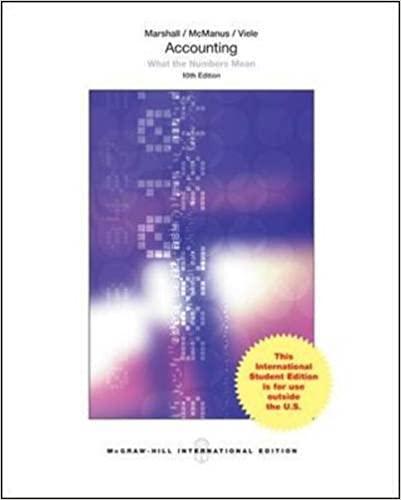Question
Ceradyne Products operates a small plant in New Mexico that produces dog food in batches of 1,500 pounds. The product sells for $6 per pound.
Ceradyne Products operates a small plant in New Mexico that produces dog food in batches of 1,500 pounds. The product sells for $6 per pound. Standard costs for 2021 are:
| Standard direct labor cost = $15 per hour | |
| Standard direct labor hours per batch = 10 hours | |
| Standard price of material A = $0.35 per pound | |
| Standard pounds of material A per batch = 744 pounds | |
| Standard price of material B = $0.55 per pound | |
| Standard pounds of material B per batch = 270 pounds | |
| Fixed overhead cost per batch = $460 |
At the start of 2021, the company estimated monthly production and sales of 49 batches. The company estimated that all overhead costs were fixed and amounted to $25,000 per month. During the month of June 2021 (typically a somewhat slow month), 38 batches were produced (not an unusual level of production for June). The following costs were incurred:
| Direct labor costs were $7,490 for 460 hours. | |
| 40,900 pounds of material A costing $8,589 were purchased and used. | |
| 11,800 pounds of material B costing $5,900 were purchased and used. | |
| Fixed overhead of $22,200 was incurred. |
Calculate variances for material, labor, and overhead. (Round intermediate calculations to 2 decimal places, e.g. 1.62 and final answers to 0 decimal places, e.g. 125. Enter all variances as a positive number.)
| Material Price Variance (Material A) | $ | select an option: Unfavorable; Favorable; Neither Unfavorable nor Favorable | |||||
|---|---|---|---|---|---|---|---|
| Material Price Variance (Material B) | $ |
| |||||
| Material Quantity Variance (Material A) | $ |
| |||||
| Material Quantity Variance (Material B) | $ |
| |||||
| Labor Rate Variance | $ |
| |||||
| Labor Efficiency Variance | $ |
| |||||
| Controllable Overhead Variance | $ |
| |||||
| Overhead Volume Variance | $ |
| |||||
Prepare a summary of the variances. (Enter unfavorable variances using either a negative sign preceding the number e.g. -45 or parentheses e.g. (45).)
| Material Price Variance (Material A) | $ | ||||
|---|---|---|---|---|---|
| Material Price Variance (Material B) |
| ||||
| Material Quantity Variance (Material A) |
| ||||
| Material Quantity Variance (Material B) |
| ||||
| Labor Rate Variance |
| ||||
| Labor Efficiency Variance |
| ||||
| Controllable Overhead Variance |
| ||||
| Overhead Volume Variance |
| ||||
| Total |
| ||||
Does the unfavorable overhead volume variance suggest that overhead costs are out of control?
| The overhead volume variance (Does suggest OR does not suggest) that overhead costs are out of control. |
Can you please help with the above problem and please show your steps in detail. Thanks!
Step by Step Solution
There are 3 Steps involved in it
Step: 1

Get Instant Access to Expert-Tailored Solutions
See step-by-step solutions with expert insights and AI powered tools for academic success
Step: 2

Step: 3

Ace Your Homework with AI
Get the answers you need in no time with our AI-driven, step-by-step assistance
Get Started


